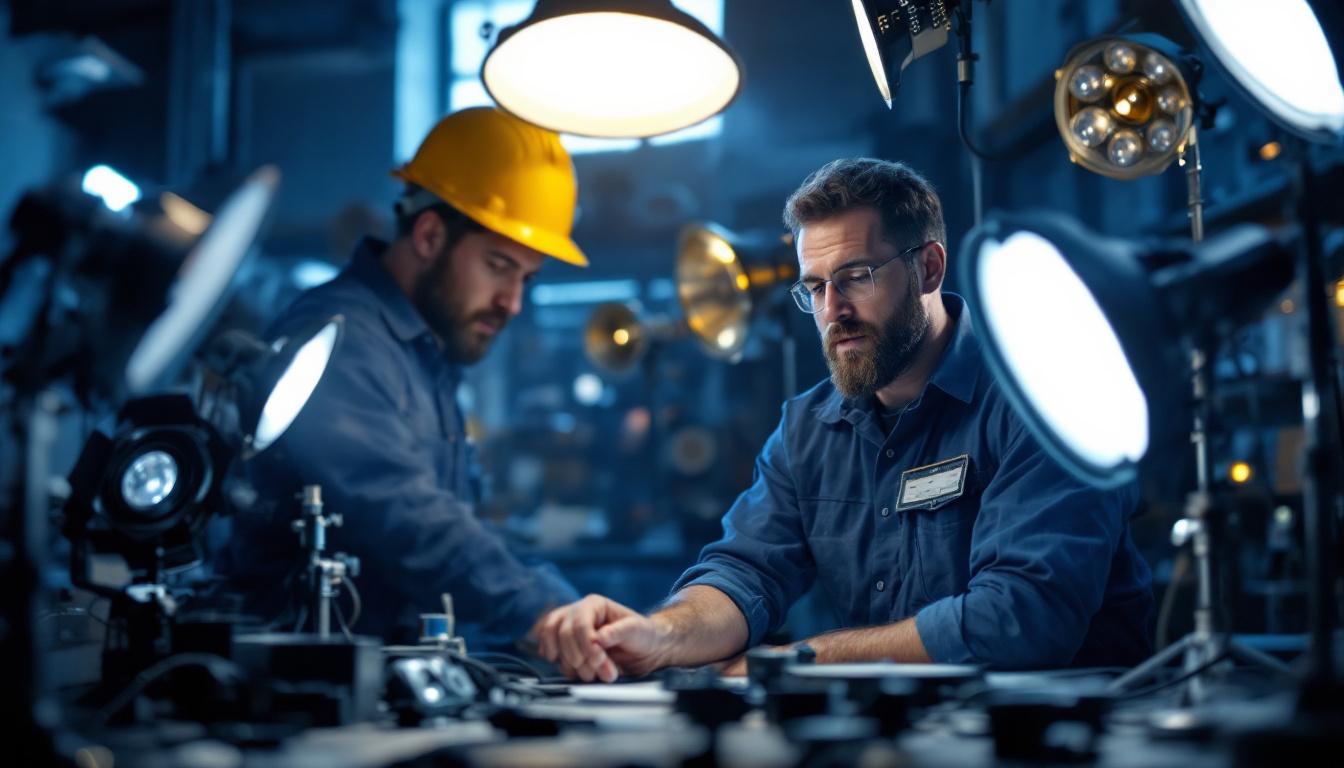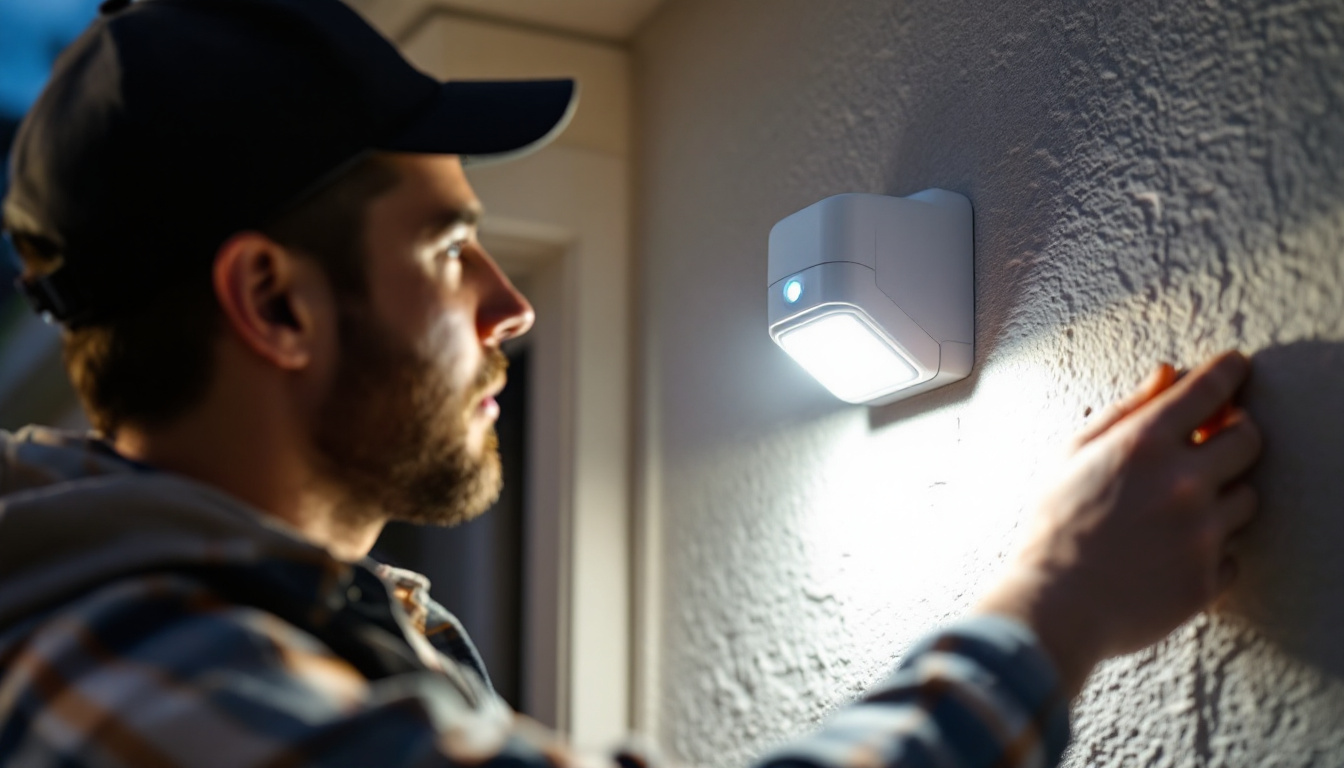
For lighting contractors, grasping the relationship between light sources and heat production is fundamental. Every light fixture, regardless of type, produces some degree of heat as a byproduct of electrical energy conversion. This phenomenon stems from the principles of physics and electrical engineering, where energy is transformed and inevitably leads to thermal output.
Incandescent bulbs, for instance, are well-known for their significant heat generation. They operate by passing an electric current through a tungsten filament, which heats up to a temperature that emits visible light. However, this process is highly inefficient, with approximately 90% of the electrical energy converted into heat rather than light.
In contrast, modern lighting technologies like LEDs (Light Emitting Diodes) and CFLs (Compact Fluorescent Lamps) are designed to be more energy-efficient, producing less heat. Yet, even these advanced lights emit some heat, primarily due to internal electrical resistance and the conversion process within the device.
Heat generation affects multiple aspects of lighting design and installation. Excess heat can degrade fixture components, reduce the lifespan of bulbs, and pose fire hazards if not properly managed. For contractors, understanding these risks is essential to recommend appropriate fixtures, ensure compliance with safety codes, and advise clients on optimal usage.
Moreover, heat impacts the surrounding environment, influencing HVAC loads and energy costs. In commercial settings, excessive heat from lighting can increase cooling requirements, affecting operational expenses. Therefore, selecting lighting solutions with minimal heat output can contribute to energy-efficient building designs.
Additionally, the placement of light fixtures plays a crucial role in managing heat distribution. Contractors must consider the proximity of lights to heat-sensitive materials and the overall layout of a space. For example, in areas where heat can accumulate, such as enclosed ceilings or small rooms, using fixtures designed for lower heat output can prevent potential damage and maintain a comfortable atmosphere. This consideration is particularly important in residential applications, where homeowners may not be aware of the implications of heat from their lighting choices.
Furthermore, advancements in smart lighting technology are also changing the landscape of heat management. Smart systems can adjust light intensity and color temperature based on occupancy and time of day, which not only enhances energy efficiency but also helps in regulating heat production. By integrating these smart solutions, contractors can offer clients a more comprehensive approach to lighting that prioritizes both illumination and thermal comfort, ultimately leading to a more sustainable and efficient living or working environment.
Lighting contractors must be familiar with how various lighting types differ in their heat production. This knowledge guides product selection and installation practices tailored to specific project needs.
Incandescent bulbs are the traditional light source and notorious for producing high heat levels. Approximately 90% of the energy consumed is emitted as heat, making them inefficient and potentially problematic in enclosed or heat-sensitive spaces.
Halogen bulbs, a subtype of incandescent technology, operate at even higher temperatures due to the halogen gas cycle that increases filament longevity and brightness. While they offer improved light quality, their elevated heat output demands careful fixture design and ventilation. Additionally, the heat generated by halogen bulbs can affect surrounding materials, leading to potential safety hazards if not properly managed. For instance, in residential settings, placing halogen fixtures too close to flammable materials can create fire risks, necessitating the use of heat-resistant housings or shields.
CFLs marked a significant improvement in energy efficiency over incandescent bulbs, converting more electrical energy into light and less into heat. Typically, CFLs produce about 70-80% less heat than incandescent bulbs of equivalent brightness.
Despite this, CFLs still generate heat within their ballast and glass envelope, which can accumulate in poorly ventilated fixtures. Lighting contractors should ensure adequate airflow around CFL installations to prevent overheating and maintain performance. Furthermore, as CFLs contain small amounts of mercury, proper disposal is essential to prevent environmental contamination, making it crucial for contractors to educate clients on safe disposal methods. The longevity of CFLs can also be affected by excessive heat, which may shorten their lifespan and reduce the overall return on investment for clients.
LEDs represent the cutting edge in lighting technology, offering superior energy efficiency and minimal heat production. Unlike incandescent or CFL bulbs, LEDs convert most electrical energy directly into light through electroluminescence, resulting in significantly lower heat output.
However, LEDs do produce some heat at the semiconductor junction, which is managed through heat sinks and fixture design. Proper thermal management is critical to maintain LED lifespan and performance, making it essential for contractors to select fixtures with effective heat dissipation mechanisms. Moreover, the ability of LEDs to operate at lower temperatures allows for more versatile applications, including in sensitive environments like museums or galleries where artwork may be damaged by excessive heat. As the market evolves, advancements in LED technology continue to improve their performance, further solidifying their position as the preferred lighting choice for energy-conscious consumers and businesses alike.
Understanding heat production is not just theoretical; it has direct consequences on installation practices, safety, and client satisfaction.
Contractors must consider heat output when choosing fixtures, especially for enclosed spaces or areas with limited ventilation. For example, installing high-heat incandescent or halogen bulbs in small, airtight fixtures can lead to overheating, potentially causing premature bulb failure or fire risks.
Conversely, selecting LED fixtures with integrated heat sinks can mitigate these risks. Placement is also crucial; avoiding installations near heat-sensitive materials or electronics helps maintain system integrity. Moreover, the use of adjustable fixtures can provide flexibility in directing light while managing heat dispersion, allowing contractors to tailor installations to specific needs without compromising safety.
Many building codes and safety standards address heat dissipation from lighting. For instance, the National Electrical Code (NEC) includes guidelines on fixture ratings, clearances, and wiring methods to prevent overheating and fire hazards.
Contractors must stay current with these regulations to ensure installations meet legal requirements and pass inspections. Failure to account for heat production can result in costly rework or liability issues. Regular training sessions and workshops can be beneficial for contractors to keep abreast of changes in codes and standards, ensuring that their practices are not only compliant but also reflect the latest advancements in lighting technology.
Heat generation correlates with energy inefficiency. Educating clients about the benefits of low-heat lighting options like LEDs can enhance satisfaction and promote sustainable practices.
Additionally, understanding heat implications helps contractors advise on lighting controls, such as dimmers and occupancy sensors, which can reduce unnecessary heat and energy consumption. This knowledge can also empower contractors to suggest comprehensive lighting plans that incorporate natural light, thereby reducing reliance on artificial lighting and further minimizing heat output. By demonstrating a commitment to energy efficiency, contractors can build trust with clients, positioning themselves as knowledgeable and responsible professionals in the industry.
Lighting technology continues to evolve, with innovations aimed at optimizing heat management and improving overall system performance.
Modern LED fixtures incorporate sophisticated heat sinks made from materials like aluminum to draw heat away from the diode. This passive cooling extends the lifespan of LEDs and maintains consistent light output.
Contractors should evaluate the quality and design of heat sinks when specifying LED products, as inadequate thermal management can lead to early failure and warranty issues. Additionally, the effectiveness of a heat sink is often influenced by its surface area and design; for instance, fins and other geometric features can significantly enhance heat dissipation. Understanding these nuances allows contractors to make more informed decisions, ensuring that the chosen fixtures not only meet aesthetic requirements but also provide reliable performance over time.
Smart lighting systems offer dynamic control over light intensity and operation schedules, indirectly managing heat production. By reducing light levels during low-use periods, these systems minimize thermal buildup and energy waste.
Integrating smart controls can be a value-added service for contractors, enhancing energy savings and client comfort. Furthermore, many smart lighting solutions now include sensors that detect occupancy and ambient light levels, automatically adjusting output to optimize both illumination and energy consumption. This adaptability not only contributes to a more sustainable approach but also aligns with the growing demand for energy-efficient solutions in both residential and commercial settings.
Advances in materials science have led to fixtures with improved thermal conductivity and ventilation. For example, fixtures with open designs or integrated fans can actively dissipate heat, allowing for higher lumen outputs without overheating.
Contractors should stay informed about these developments to recommend state-of-the-art solutions that balance brightness, heat management, and aesthetics. Moreover, the incorporation of phase change materials (PCMs) into fixture designs is an emerging trend that can further enhance thermal regulation. These materials absorb, store, and release heat as they change states, providing an additional layer of temperature control that can significantly improve the longevity and efficiency of lighting systems. By understanding and leveraging these innovations, contractors can offer clients cutting-edge solutions that not only meet current demands but also anticipate future needs in an ever-evolving market.
Heat production is an inherent aspect of all lighting technologies, but its extent varies widely. Incandescent and halogen bulbs generate significant heat, requiring careful handling, while CFLs and LEDs offer more efficient alternatives with reduced thermal output.
For lighting contractors, understanding these differences is critical to selecting appropriate fixtures, ensuring safe installations, and advising clients effectively. Proper heat management enhances fixture longevity, complies with safety standards, and contributes to energy-efficient building designs.
Staying informed about technological advancements and integrating smart controls can further optimize heat control, positioning contractors as knowledgeable professionals in a competitive market.
Ready to enhance your lighting installations with products that combine quality, efficiency, and affordability? Look no further than LumenWholesale for all your lighting needs. Our spec-grade lighting solutions are designed to meet the highest industry standards, ensuring you deliver top-notch performance to your clients. With unbeatable wholesale prices and the convenience of free shipping on bulk orders, you can trust LumenWholesale to provide premium lighting without the premium price tag. Make the smart choice for your business and explore our collection for Wholesale Lighting at the Best Value today.

Discover innovative hacks for smart lighting contractors using Lumens LED lights.

Explore the revolutionary advancements in lighting design and installation with “Extra Light.” Discover how cutting-edge technologies and sustainable practices are shaping the future of illumination, offering innovative solutions for homes and businesses alike..

Discover why lighting contractors should prioritize motion sensor technology in their projects.

Discover the top solar aluminum pathway lights made in the USA with our comprehensive guide tailored for lighting contractors.